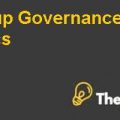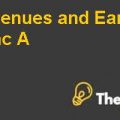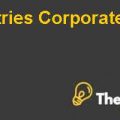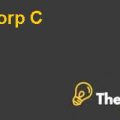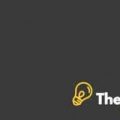INDUSTRIAL RELATIONS ISSUE IN IRISH RAIL
The situation selected for examining the industrial relations system model is the decision of Irish rail to have payroll savings ranging from 1.7% to 6.1% for a 28 month time period. These cuts were basically set out under the order of Labor Court and they are needed to be applied immediately (Times, 2014).
Background
Iarnrod Eireann is basically Irish name for Irish Rail. It is 100% owned by Córas Iompair Éireann (CIÉ) which is a statutory body. The ownership of the CIE is with the Minister of Transport, Tourism and Sport. Irish Rail is a public limited company and its financial statements are accessible to the public. It is regulated under the Companies Act 1963-2009. The registration under this act prevents the company from involving in unstoppable trading which can cause it to accumulate unviable debts. External Audit is compulsory for the companies under this act. Moreover, they cannot go for borrowing money in order to finance its operations or future investments. ( National Transport Authority, 2013)
Ireland’s department of Transport, Tourism and Sport has slashed the amount subsidy in the form of Public Service Obligation (PSO) in 2014. The amount upon which consensus was reached was €17 Million or 7% for the year. This cut in subsidy badly affected the operational performance of the Irish Rail. This cut camein addition to several challenges in the form of reduced patronage and revenues. Along with the challenging situation, other factors also affected the company’s performance very badly. These were the higher fuel costs and previous cuts in subsidy in the form of PSO since 2009.
It had to resort to different measures in order to smoothly run the operations of the company.In order to make it better,the company resorted to improving the operation performance through bringing efficiencies in the operations. However,despite this effort, the company was not able to bring improvement in the operations because challenges were great in number.
The decline of revenue continued as the number of passengers continued to fall in 2013 although at a slower rate. The operating environment at that time was having detrimental effect on the demand of public transportation that it had affected supplementary revenue streams badly. The company needs to take steps so that the company can stand on a firm financial foothold. It needs to minimize the service cuts which are possible only through bringing financial discipline in the company.
The company resorts to beg the National Transport Authority to let it increase the fares in two stages. In the first stage, the proposal to increase the prices of the tickets for monthly and annual subscriptions have been put forward and in the second stage, the proposal to increase the cash, leap and prepaid fares have been put forward. The authority was only obliged to increase the fares by 1.85% to 10.03% with most increases in the middle of range. ( National Transport Authority, 2013)
As the company was not able to get the required increase in the fares, it resorted to cost cutting measures like payroll cuts.It was negotiated in the Labor Relations Commission that the company will be able to cut pays ranging from 1.7% to 6.1% for three years starting from March 1st, 2014. The salaries were inoriginal amounts after three years.(RTE News, 2014)
The clerical union, the Transport and Salaried Staff Association had accepted the pay cuts.However, the National Bus and Rail Union (NRBU) and SIPTU rejected the pay cuts. NBRU rejected the proposal by an overwhelming majority of 82% and SIPTU members rejected the offer with 71% votes. The company claimed that delay in the cost savings was costing the company €100000 per week.(RTE News, 2014)
Industrial Relations System Model
Before applying the model of industrial relations system on to the situation described above, it is necessary to go into some introductory remarks about this model. Industrial relations system model had been proposed by John Dunlop in the 1950s. According to this economist, the industrial relations systems model contains three agents namely organizations who do work of management, employees who are being managed and formal or informal ways of their organization and lastly the government agencies.
These actors along with their organizations are present in an environment which is explained in terms of technology, markets of labor and product and the power distribution in a widespread society as it goes on to impact both the individuals and the organizations. Inside this environment, actors interact with one another, deliberate and utilize economic or political power in the process of setting rules and regulations that make up the outputs of this model.
Applying the Industrial Relations Model System to the Situation of IrishRail:
Applying the industrial relations model to the situation of Irish rail is important in order to understand this industrial relations issue......................
This is just a sample partial case solution. Please place the order on the website to order your own originally done case solution.




